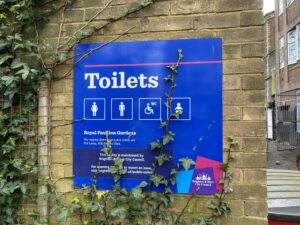This opinion piece was published on April 2023 in Brighton & Hove News. https://www.brightonandhovenews.org/2023/04/12/take-pre-election-promises-with-a-pinch-of-salt/
In the run-up to local elections, politicians display a flurry of concern about voter-opinion. It fades once polling is over.
voter-opinion. It fades once polling is over.
After that deals are done between parties, elected councillors burnish their CVs and collect their allowances, while paid staff return to doing things the way they have always done. It’s a system that works well….for the Council.
Democracy worked better for voters before we became a city. Borough elections took place every year, with a third of councillors retiring or standing for re-election. Every fourth year, there were county elections. Elected councillors, paid officials and political parties were kept on their toes, while borough and country councils kept an eye on each other.
Voters passed annual judgement on political administrations, about local issues such as weeding and toilet maintenance. There was less grandstanding, less misinformation and indifference.
As four-yearly voters, there’s little we can do, other than demand electoral reform (as I believe we should) while scrutinising the Council’s actions – and taking pre-election promises with a great big pinch of salt.
I’ll give just one example. The Green administration, supported by council officials, recently decided to close most of the public toilets in Brighton. The decision was met by a public outcry, which the administration seemed prepared to face down, until Labour, whom the Greens had expected to support them, failed to do so.
The Greens grudgingly announced that the decision would be reversed, but gave no details about how and when this might be done. The obvious risk is that once the local election is concluded, closures will be reinstated.
I’m especially concerned about the devastating effects of the closure of the Pavilion Gardens toilets. So I was interested to read that the Policy and Resources Committee of the Council had quietly recommended ownership of the toilets be transferred from the Council to the Royal Pavilion and Museums Trust, the body which now leases and manages the Pavilion Gardens on behalf of the Council. The Council report suggests the Trust may (eventually) provide some new public lavatories alongside a “Changing Places” lavatory.
It is well known that the Trust plans to bid for funding from the Heritage Lottery Fund to develop the Regency Gardens and fund one Changing Places lavatory. If successful, this would rightly make toilet facilities available to severely disabled people with complex needs, who require hoists and space for two carers. However, this can only be worthwhile if there is no loss of other facilities.
A single Changing Places lavatory cannot replace the closed services, which include five female cubicles, three male cubicles, a ‘long urinal’ and two disabled lavatories (female and male) both accessed by RADAR key. Furthermore, assuming the bid is successful, work cannot begin until 2025 and will not be completed until at least 2026.
Despite the Council’s stated commitment not to close lavatories, and the fact those in the Pavilion Gardens are desperately needed, this committee report suggests there is no future obligation on the Council or the Trust to repair, redecorate or re-open them, even on a temporary basis. The Trust has made it clear it cannot afford additional work and the Council has made no commitment, even to provide a portaloo – still less to replace like with like.
A further worry, given the contentious nature of these closures and the potential costs and delay involved, is that the relevant committee delegated the un-elected Executive Director for Economy, Environment and Culture to “agree the terms of the lease, including any financial contribution to rebuilding the toilet block.” (my emphasis).
It concerns me too that councillors have made decisions on the basis of a report which talked-up its equalities credentials by falsely asserting that the existing block provided “no accessible facilities for people with disabilities”. This is untrue. The fact that, like the rest of the block, the two disabled loos were badly maintained and sometimes locked for no reason, does not mean they were not there. Any future application for funding on that basis would be fraudulent.
Furthermore, this misleading report purports to explore the equalities and public health implications of Changing Places toilet provision in the Gardens, but makes no reference to the distress and risk to public health caused by current closures to those such as: elderly and disabled people and those with health, mobility and incontinence problems; children on school visits; pregnant women and parents needing baby-changing facilities; as well as tourists and homeless people.
There remains a steady stream of people, many elderly or with children, who approach these lavatories and then walk away disappointed. Faeces, possibly human, has been left to lie outside the toilet blocks and rats now outnumber the squirrels. There are noticeably fewer Spring customers in the garden cafe, a much-loved gathering point for many elderly, frail and disabled people living alone. Several have told me they simply cannot manage the walk to the Jubilee Library toilets. Some express a fear that public use of the cafe and gardens is being deliberately run down.
A final insult to the public is the report’s suggestion that “escalating levels of antisocial behaviour have made it untenable for the toilets to remain open”. In fact, though such behaviour has long been a problem – as it is throughout the city – the vast majority of people who use the toilets have done so responsibly.
The truth is that the toilets have suffered less from anti-social behaviour than from years of bad management, inadequate cleaning, poor maintenance and a failure to repair.
For that, the Council is entirely responsible.
